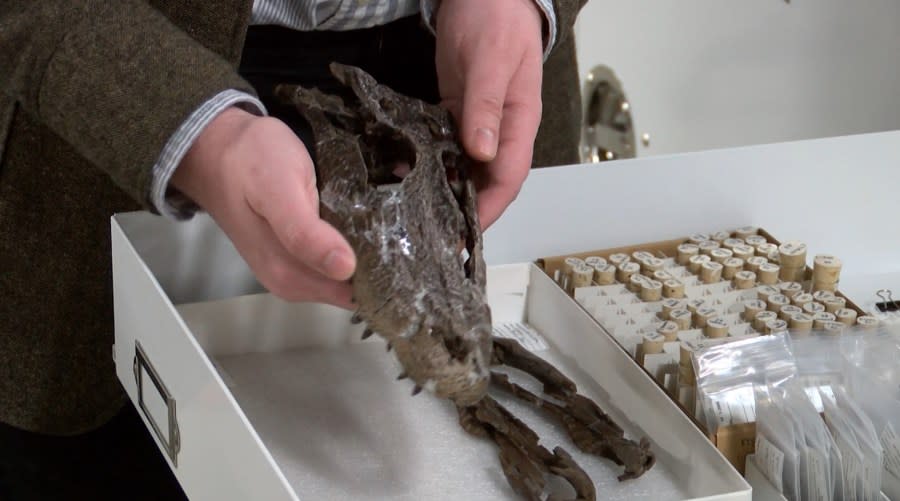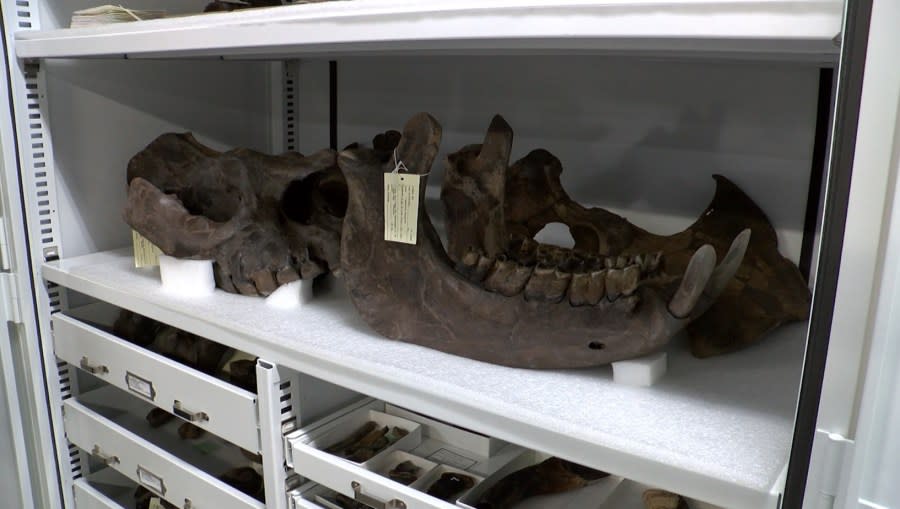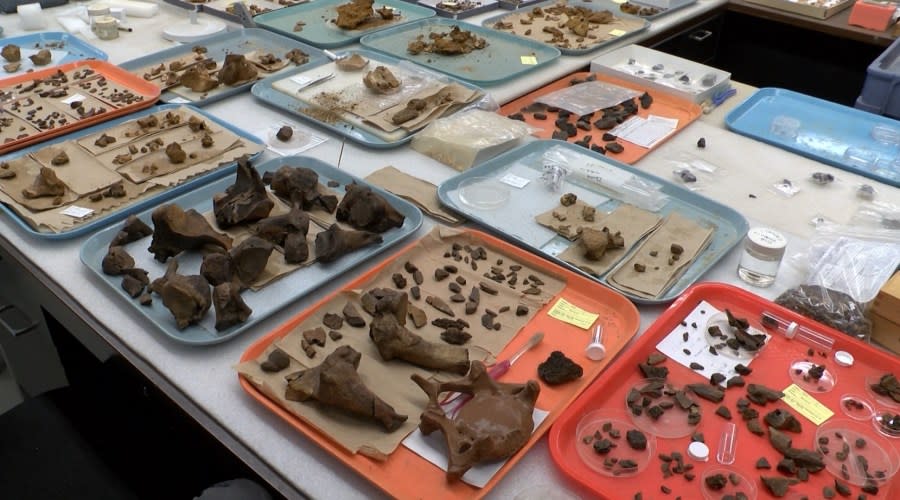By-chance finding of Gray Fossil Site led to discovery of thousands of specimens
GRAY, Tenn. (WJHL) – Researchers at the Gray Fossil Site have uncovered thousands of specimens and made groundbreaking discoveries, all thanks to an accidental unearthing in 2000.
The five-acre site was discovered by Tennessee Department of Transportation crews more than two decades ago while excavating for a road project. Crews found an uncommon deposit of black clay and bone fragments.
“People start to notice more significant things,” said Shawn Haugrud, the lab and field manager at the fossil site. “‘Maybe it’s an Ice Age site. It’s definitely a fossil.’ So they start to get excited, and then eventually they find an alligator skull.”
The History of Hands On!: How a move to Gray helped the museum thrive
The alligator in East Tennessee is just one of many discoveries. As of 2024, thousands of specimens have been found and documented. They are then placed in the Gray Fossil Site’s collections room, which houses remnants of all kinds of creatures.
“We have about 38,000 fossils in our collection,” said Matthew Inabinett, the collections manager at the Gray Fossil Site. “That’s actually cataloged specimens, not individual pieces.”
Among those species are animals like the rhinoceros, red panda and mastodon. Researchers have made first-of-their-kind discoveries at the site, such as new species of moles, turtles and bone-crushing dogs.
Photo: An alligator skull discovered at the Gray Fossil Site. (WJHL) Photo: Fossils discovered at the Gray Fossil Site. (WJHL) Photo: Fossils discovered at the Gray Fossil Site. (WJHL) Photo: Fossils discovered at the Gray Fossil Site. (WJHL)
Technicians at the site use tools to clean and piece together bone fragments and evidence of life.
“I’m working on the very back of the skull of one of our older individuals of rhinoceros,” said lab and field technician Laura Emmert during an interview with News Channel 11. “I’ve been working on him for close to two years now.”
Inabinett said the fossils found at the site are unlike any other in the U.S.
“This is the first fossil site from this time period in this part of the country, so a lot of the animals and plants here are possibly things that have never been seen anywhere else,” Inabinett said.
What can lead to a lifetime hunting ban in Tennessee?
The pit reaches 140 feet into the earth, and crews expect to be digging up fossils for years to come.
“We’re talking 16,000 years at the pace that we dig,” Haugrud said. “Every year, we can remove 20 tons of material but it’s just scratching the surface of what’s actually out here.”
For the latest news, weather, sports, and streaming video, head to WJHL | Tri-Cities News & Weather.




